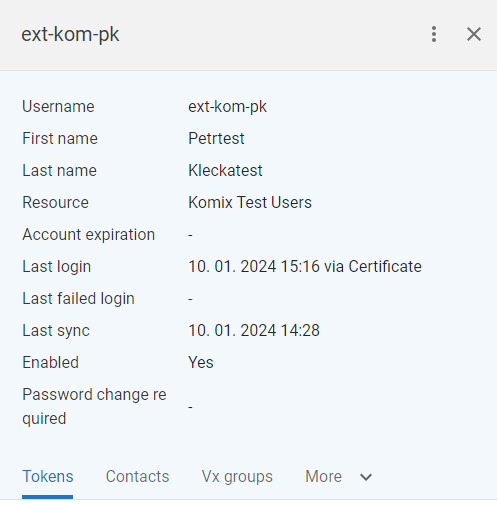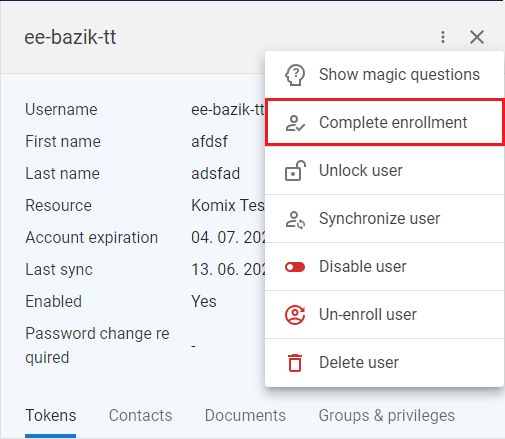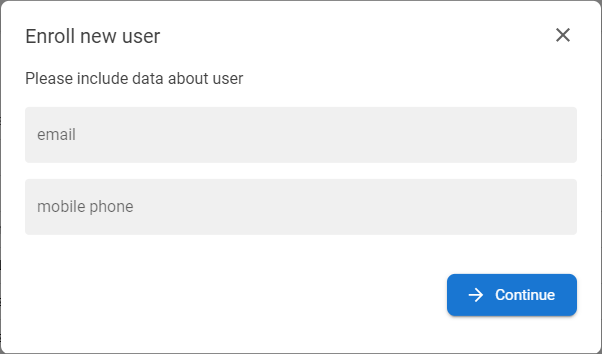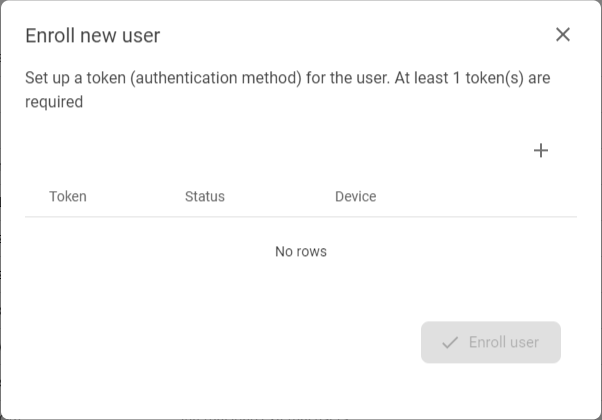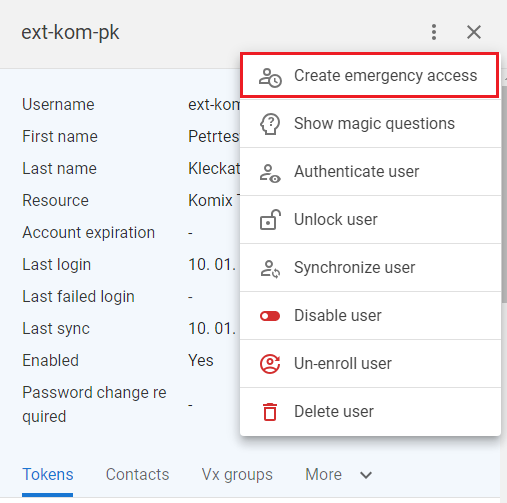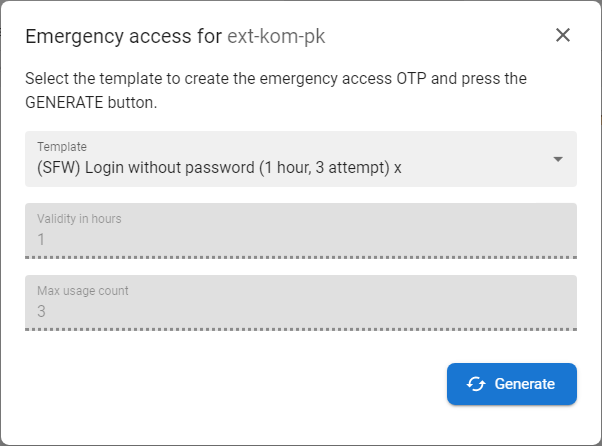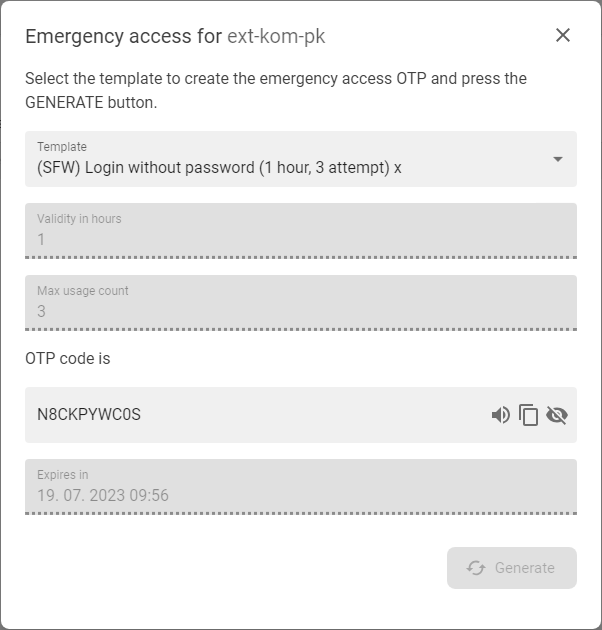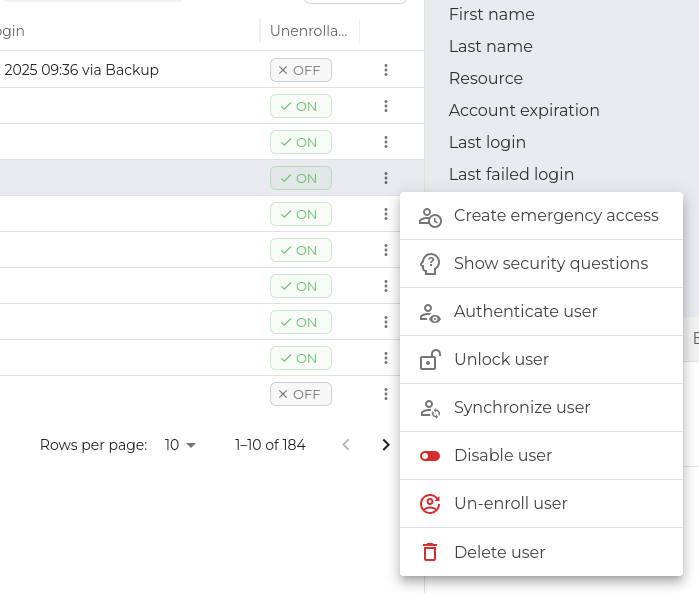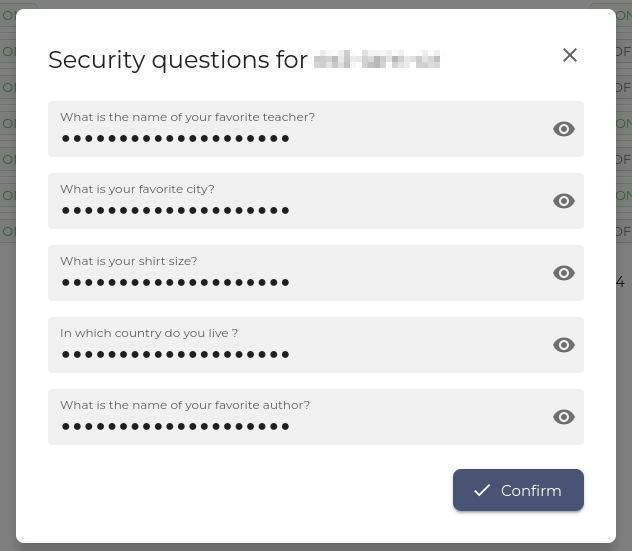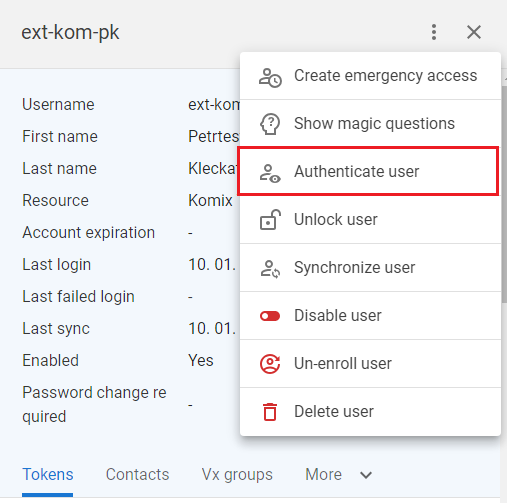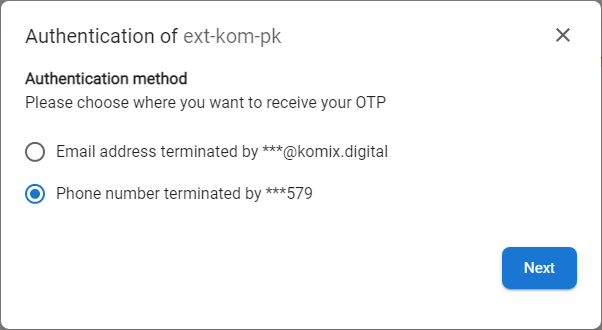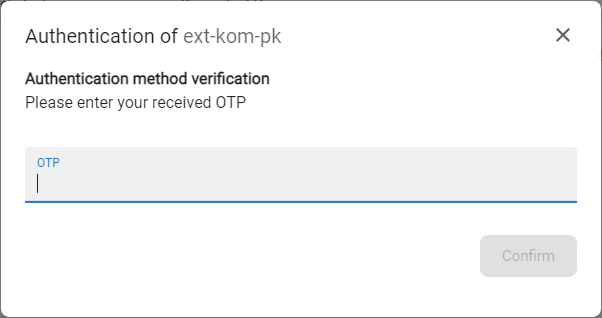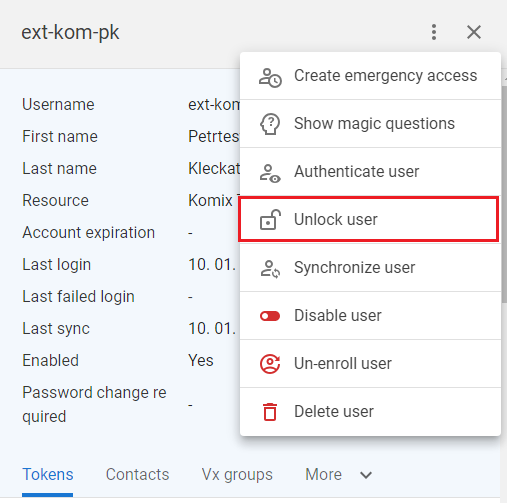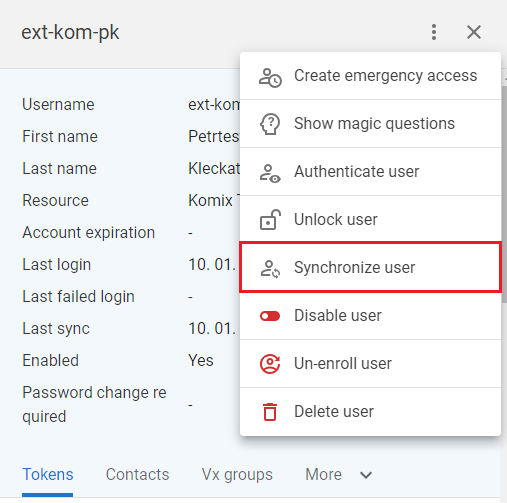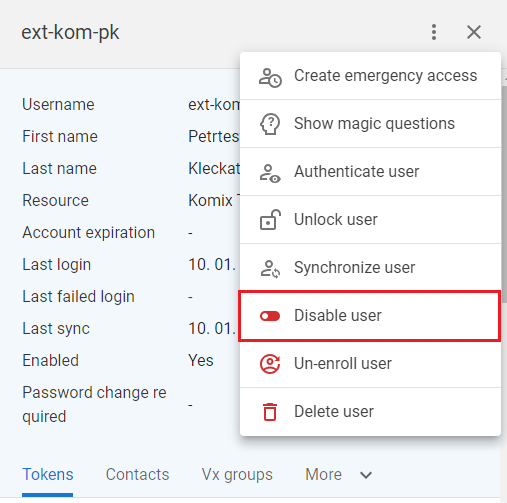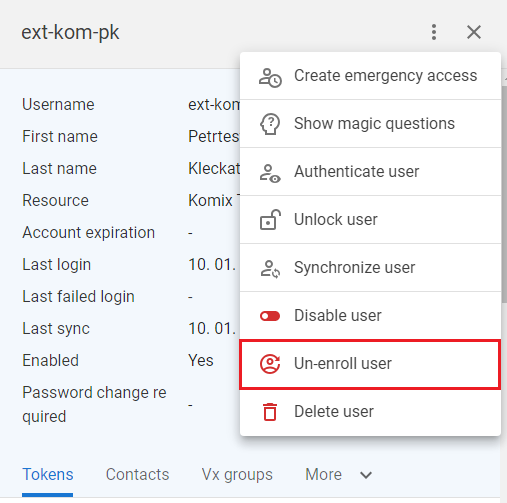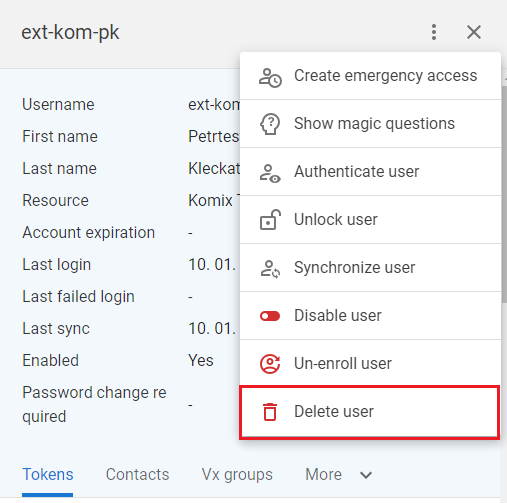Display User Details
Display user detail allows the operator to display all the necessary details needed for the overall view of each user.
Available actions for users with appropriate privileges:
|
The feature is available only for partially enrolled users - the operator can use it and finish the user's enrollment on behalf of the user. The enrollment process is done by the operator on behalf of the user. In specific cases, it is also possible for the operator from one tenant to enrol the user to another tenant (in case the operator has all requested permissions and privileges defined on the target tenant side). |
||
|
Emergency access is a feature that allows an operator to generate a special one-time password (OTP) for a user who has lost all means of authentication using a second factor - for example, a lost mobile phone. The OTP generated in this way has limited validity and gives the user the possibility to log in to the application and perform the necessary actions to register new second-factor authentication methods (for example, registration of new tokens on a new mobile phone, etc.). An emergency access code could be also used as an approval method. Note: The emergency code can be used to log in as a replacement for a standard OTP or as part of the approval process. Its validity is defined based on a template, BUT this code is deactivated when any of the following operations are performed:
|
||
|
Display the user's security questions and answers. |
||
|
User authentication is a feature that is used by operators to verify the identity of the caller. It consists of sending a specifically generated OTP in a chosen way (for example to a mobile phone) and its return verification during communication with the caller. If the OTP communicated by the user is correct, it can be assumed that he is who he claims to be. |
||
|
A feature used by the operator to unlock a user account locked in MAYI ID - OTP auth application. Users can lock due to multiple wrong password inputs. |
||
|
A feature used by the operator to immediately update of user from external resources (first name, last name, status etc). |
||
|
A feature used by the operator to enable disabled users or to disable active users in AD. |
||
|
Re-enroll user feature allows the operator to delete enrolled users from the system in case of any problems with user configurations. During the deletion, all user data and enrolled tokens are removed from the database and relevant storage. The user receives an email with information about the link to make a new enrollment. |
||
|
Permanently delete the user from the system and source LDAP as well - depending on admin configuration. |
Content of the user's detail
|
The drawer with the details of the user consists of a header with the details of the user:
|
|
|
The Tokens tab displays a list of the user's registered tokens - see more detail on the User tokens page. |
|
|
The Contacts tab displays the contact details of the user - see more details on the Contacts page. |
|
|
The Documents tab displays a list of user's documents uploaded within the enrollment process or later via the Account/Documents page - see more detail on the User documents page. |
|
|
The Groups & privileges tab displays a list of groups that the user is a member of - see more details on the Groups & Privileges page. |
Complete enrollment - enrollment is done by the operator on behalf of the user
|
1 |
This function could be run as a part of the invitation process (see above - Invite new user - Create new user) OR as a stand-alone feature from the Users list in the Operational console - open the Users menu option in the Operational Console menu, switch to Partially enrolled users and use the Complete enrollment menu option from the context menu |
|
|
2 |
The first step of enrollment on-behalf form will be displayed. The content of the form is defined on the administrator level. |
|
|
3 |
Fill in all mandatory fields and press the CONTINUE button. |
|
|
4 |
The second step of enrollment on-behalf form is displayed. This step contains the enrollment of tokens. Press the ADD NEW TOKEN button [ The types of tokens that could be enrolled are defined on the administrator level. |
|
|
5 |
Enrol the required number of tokens and press the ENROLL USER button. |
|
|
6 |
The user is enrolled in MAYI ID and capable of log-in using the enrolled token. |
Create emergency access
Show Security questions and answers
Authenticate user
|
1 |
Press the AUTHENTICATE USER button [
|
|
|
2 |
Select how the OTP is to be delivered and press the NEXT button. The list of methods is based on contact details filled within the Enrollment process or in the Contact details feature - the feature doesn't use the user's tokens but only contact details like a mobile phone number or email address |
|
|
3 |
The system will send the OTP to the user in the selected way. |
|
|
4 |
Request the delivered OTP from the user fill it in the OTP field and press the CONFIRM button |
|
|
5 |
If the entered OTP is correct the system will display a message about successful authentication of the user. |
|
|
5 |
If the entered OTP is not correct, the user is not authenticated. Authentication could be done repeatedly. |











